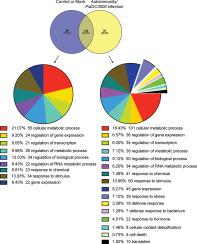Journal of Proteomics ( IF 2.8 ) Pub Date : 2020-11-22 , DOI: 10.1016/j.jprot.2020.104054 Kishor D Ingole 1 , Shraddha K Dahale 2 , Saikat Bhattacharjee 2

|
Rapid adaptation of plants to developmental or physiological cues is facilitated by specific receptors that transduce the signals mostly via post-translational modification (PTM) cascades of downstream partners. Reversible covalent attachment of SMALL UBIQUITIN-LIKE MODIFIER (SUMO), a process termed as SUMOylation, influence growth, development and adaptation of plants to various stresses. Strong regulatory mechanisms maintain the steady-state SUMOylome and mutants with SUMOylation disturbances display mis-primed immunity often with growth consequences. Identity of the SUMO-substrates undergoing SUMOylation changes during defenses however remain largely unknown. Here we exploit either the auto-immune property of an Arabidopsis mutant or defense responses induced in wild-type plants against Pseudomonas syringae pv tomato (PstDC3000) to enrich and identify SUMO1-substrates. Our results demonstrate massive enhancement of SUMO1-conjugates due to increased SUMOylation efficiencies during defense responses. Of the 261 proteins we identify, 29 have been previously implicated in immune-associated processes. Role of others expand to diverse cellular roles indicating massive readjustments the SUMOylome alterations may cause during induction of immunity. Overall, our study highlights the complexities of a plant immune network and identifies multiple SUMO-substrates that may orchestrate the signaling.
Significance
In all eukaryotes, covalent linkage of the SMALL UBIQUITIN-LIKE MODIFIER (SUMOs), a process termed as SUMOylation, on target proteins affect their fate and function. Plants display reversible readjustments in the pool of SUMOylated proteins during biotic and abiotic stress responses. Here, we demonstrate net increase in global SUMO1/2-SUMOylome of Arabidopsis thaliana at induction of immunity. We enrich and identify 261 SUMO1-substrates enhanced in defenses that categorize to diverse cellular processes and include novel candidates with uncharacterized immune-associated roles. Overall, our results highlight intricacies of SUMO1-orchestration in defense signaling networks.
中文翻译:

拟南芥防御诱导过程中SUMO1-SUMOylome变化的蛋白质组学分析
特定受体促进植物对发育或生理线索的快速适应,这些受体主要通过下游伴侣的翻译后修饰(PTM)级联来转导信号。小泛素样修饰剂(SUMO)的可逆共价结合,这一过程被称为SUMOylation,影响植物的生长,发育以及对各种胁迫的适应性。强大的调节机制可维持稳态的SUMOylome,具有SUMOylation干扰的突变体通常会产生错误的免疫力,从而带来生长后果。但是,在防御过程中经历SUMOylation变化的SUMO基质的身份仍然未知。在这里,我们利用拟南芥突变体的自身免疫特性或在野生型植物中对丁香假单胞菌诱导的防御反应pv番茄(PstDC3000)可以丰富和鉴定SUMO1底物。我们的研究结果表明,由于防御反应过程中SUMOylation效率的提高,SUMO1共轭物的增强。在我们确定的261种蛋白质中,有29种先前与免疫相关的过程有关。其他人的作用扩展到不同的细胞作用,表明SUMOylome改变可能在诱导免疫过程中引起大规模的重新调整。总体而言,我们的研究突出了植物免疫网络的复杂性,并确定了可能协调信号传导的多种SUMO底物。
意义
在所有真核生物中,小泛素样修饰剂(SUMO)(称为SUMOylation)与目标蛋白的共价连接会影响其命运和功能。在生物和非生物胁迫反应期间,植物在SUMO化蛋白池中显示出可逆的调整。在这里,我们证明了拟南芥在诱导免疫力方面的全球SUMO1 / 2-SUMOylome净增加。我们丰富和识别261 SUMO1底物在防御中得到增强,这些底物可归类到不同的细胞过程,包括具有未知免疫相关作用的新型候选物。总体而言,我们的研究结果突显了国防信号网络中SUMO1编排的复杂性。











































 京公网安备 11010802027423号
京公网安备 11010802027423号